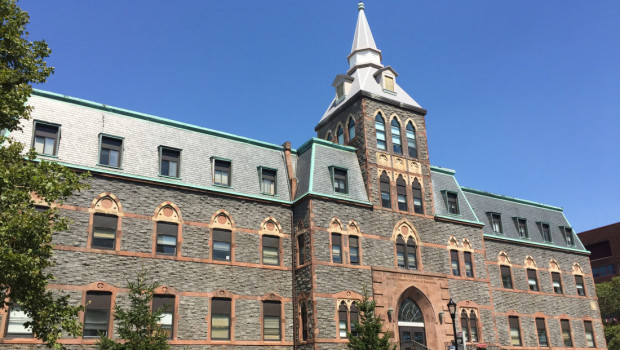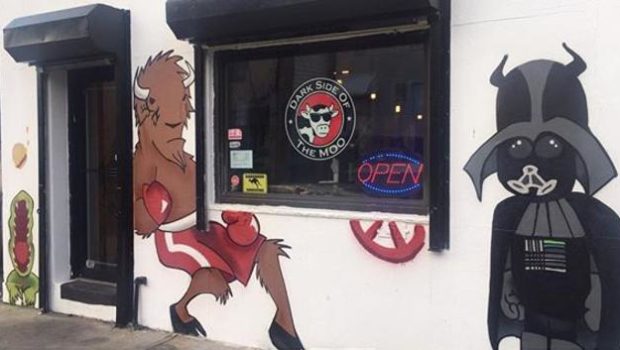
Stevens Incoming Class of 2020 Ready to Make Their Mark at Castle Point
via Stevens Institute of Technology
Among them are a professional ballet dancer, a Special Olympics swim coach and a roller coaster designer. They have volunteered for a mission trip to Nicaragua, started a Habitat for Humanity chapter at their high school and launched businesses. And this is the short list of accomplishments.
They are the Stevens Class of 2020, armed with personality and already making their mark. As these freshmen enter Castle Point this fall, many have already made an impact and they all hold much promise for their college years and beyond.
“I am thrilled to welcome this incredibly talented class to Stevens,” said Marybeth Murphy, vice president for enrollment management and student affairs at Stevens. “We know they will make us proud.”
Jacqueline Williams, dean of undergraduate admissions, praised the academic talent, diversity of experience and interests and accomplishments of this incoming class, who have been selected from a strong application pool. The overall acceptance rate for the freshman class is 39 percent, down from 44 percent in fall 2015, making it among the most selective classes in recent years. Indeed, the average SAT score is up ten points from last year’s freshman class, with an average score of 1342, among statistics available in mid-August.
Being both academically talented and well rounded is a hallmark of the Stevens student that always impresses her.
“They’re excelling in athletics, working, doing community service. They are passionate about many different things,” Williams says.
This incoming freshman class will be almost 7 percent larger and more diverse than last year. One of the most exciting developments is a 13 percent increase in women enrolled from last year. As of Aug. 18, 221 women were enrolled in the freshman class, up from 196 in fall 2015. Enrollment of women has been relatively steady at Stevens over the past several years, close to 30 percent at both the undergraduate and graduate levels. Williams says that she hopes to see these numbers increase and is encouraged by this year’s class.
Stevens certainly fares much better in this area, when compared to other schools that offer engineering. Enrollment of women in engineering in the U.S. currently stands at 21.5 percent, according to Susan Metz, executive director of diversity and inclusion at Stevens.
“Stevens’ ability to draw impressive numbers of outstanding women students is a tribute to the work done to develop exceptional programs within all of its schools and to create a welcoming academic climate for all students,” she says.
Metz praised the university’s pre-college programs, which introduce talented students to the campus and the faculty, provide a rich experience and, for women, insight into an environment where they can thrive, she says.
The number of under-represented minority students enrolled in the freshman class has also increased by 4.3 percent, making progress toward another of the university’s important strategic goals.
“The more diverse student body on campus, the more students learn about students from different backgrounds and become better global citizens,” Williams says.
“Increasing the diversity of students and faculty at Stevens is a strategic priority and educational imperative because it enriches the exchange of ideas impacting knowledge, research and innovation,” Metz says.
The demand for a Stevens education is growing. The university enjoyed a 13 percent increase in undergraduate applications from 2015. Applications increased across the board: more women, more African-American and Hispanic applicants and more students applying to each of the four Stevens schools.
More students from outside of the New York metropolitan area are also making Castle Point their home. As of mid-August, Stevens saw a 3.5 percent increase in out-of-state enrollment among the freshman class. Freshmen from 25 states and 12 countries have enrolled, with China, Brazil, South Korea and India making the top of the list.
While demand for all four of Stevens’ schools has increased, the School of Business saw some particularly pronounced growth, with applications up 30 percent and freshman enrollment jumping 41 percent.
“The business school is doing very well,” Williams said, with increasing numbers of students participating in its popular Trading Day event each spring for high school students.
Within the Schaefer School of Engineering and Science, computer science was the most popular major for freshmen applicants, with mechanical engineering the most popular engineering major. In the School of Business, most students applied to the general business program while most students applying to the College of Arts and Letters were attracted to its music and technology program. The most popular program that students applied to within the School of Systems and Enterprises was software engineering.
Stevens has attracted more applicants and enrolled such a strong freshman class from that pool for a variety of reasons. Stevens’ nationally award-winning SU+RE HOUSE Solar Decathlon team, its co-op andcareer programs, along with greater and more strategic marketing and recruiting efforts have all played a large role. The expansion of on-campus programs for prospective and admitted students, as well as a successful Accepted Students Weekend this spring that allowed the university to accommodate more students — all have contributed to a very successful year, Williams says.
And the growth has not been limited to the undergraduate level. This fall, the graduate enterprise is expecting its largest incoming class ever. As of Aug. 18, 819 new international master’s degree students had arrived for orientation — the largest number in the university’s history — with even more students expected. By fall, the program expects to break its record of 1,246 incoming graduate students, set in 2014, says Shobi Sivadasan, dean of graduate admissions and enrollment management.
With 40 percent growth in applications over last fall, including applications from 80 countries, compared to 66 countries last year, the trajectory at Stevens is much to celebrate, Sivadasan says.
“The graduate enterprise at Stevens has advanced rapidly over the past few years,” she says. “Not only has our campus diversified, the caliber of our students has also improved significantly — increasing selectivity and positioning Stevens as a global academic and research institution.”

 Previous Article
Previous Article Next Article
Next Article Hoboken Historical Museum’s Annual Secret Garden Tour Celebrates 20th Anniversary — SUNDAY
Hoboken Historical Museum’s Annual Secret Garden Tour Celebrates 20th Anniversary — SUNDAY  Hungry Yelper Experiences Ripple in Space-Time Continuum at Local Restaurant
Hungry Yelper Experiences Ripple in Space-Time Continuum at Local Restaurant  CSBK Hosts Grand Opening Party at Hoboken Banking Center — SATURDAY
CSBK Hosts Grand Opening Party at Hoboken Banking Center — SATURDAY  PUNCH DRUNK: Hoboken PD Looking to ID Barfight Bro
PUNCH DRUNK: Hoboken PD Looking to ID Barfight Bro  Hoboken Musicians to Play Stevie Ray Vaughn for Texas Flood Relief
Hoboken Musicians to Play Stevie Ray Vaughn for Texas Flood Relief  City Announces Mother of Two Hoboken Police Officers Has Died From COVID-19
City Announces Mother of Two Hoboken Police Officers Has Died From COVID-19  WORK IT OUT WEDNESDAY: Get “HIIT” With the Best Fitness Trend of the Moment
WORK IT OUT WEDNESDAY: Get “HIIT” With the Best Fitness Trend of the Moment  Hoboken Veterans’ Day Ceremony — Wednesday, November 11th at Elysian Park
Hoboken Veterans’ Day Ceremony — Wednesday, November 11th at Elysian Park